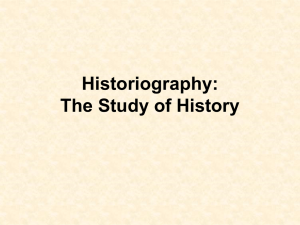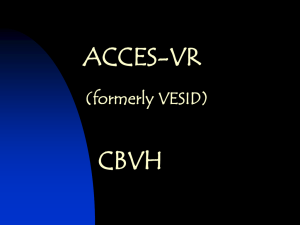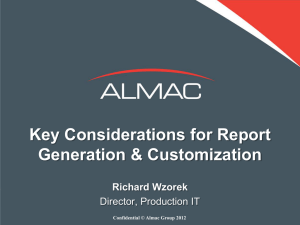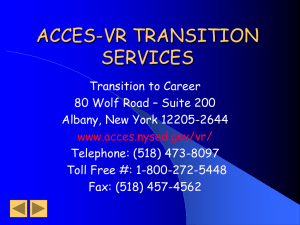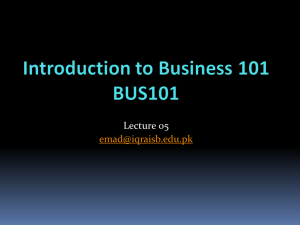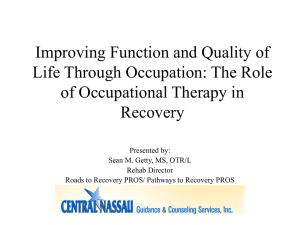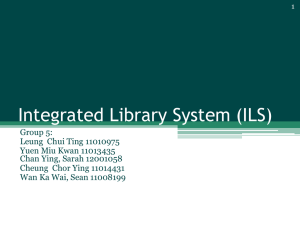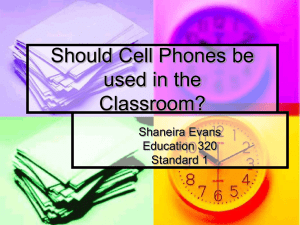APSE PPT 2014_2 AS Additions
advertisement
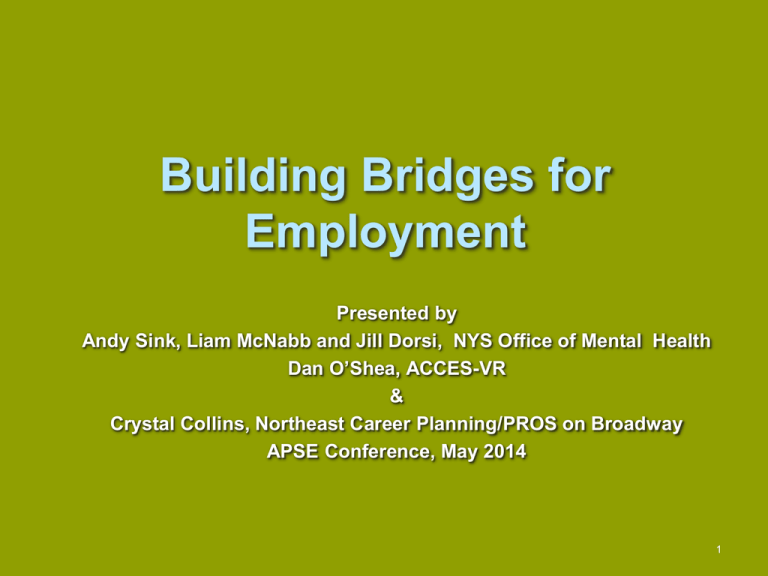
Building Bridges for Employment Presented by Andy Sink, Liam McNabb and Jill Dorsi, NYS Office of Mental Health Dan O’Shea, ACCES-VR & Crystal Collins, Northeast Career Planning/PROS on Broadway APSE Conference, May 2014 1 Employment and Mental Illness • 78% of people who are diagnosed with a serious mental illness are unemployed (2006) • This rate is lower than for people with other disabilities (30% employed vs 22%) • Stigma and misunderstanding of mental illness present a significant barrier to employment 2 SAMSHA Employment Intervention Demonstration Program 5 year study of employment programs nationwide evaluated a variety of supported employment approaches Most successful outcomes occurred when: programs integrated mental health services with vocational services focused on rapid placement into jobs of the person’s choice collaboration between the support providers and the businesses employing the individuals Source: Supported Employment: a guide for mental health planning and advisory councils. www.samsha.gov 3 Through integration and collaboration multiple barriers to employment can be overcome 4 Updates on Collaboration Efforts Improved lines of communication between VR Counselors and PROS practitioners Worked together to update PROS Guidance Documents for implementing ACCES-VR supports in combination with PROS Services ACCES-VR staff have presented at OMH Field Offices and with PROS providers and PROS staff have provided training to VR Counselors 5 What we discovered… PROS is able to integrate mental health supports in conjunction with supports provided to people through ACCES-VR Liaison connections between the PROS and ACCES-VR office are essential to seamless integration How to coordinate ACCES-VR CRS Milestone Payments with PROS Ongoing Rehabilitation and Supports (ORS) 6 What is PROS? Personalized Recovery-Oriented Services Rehabilitation program with a treatment component Core Value: Recovery is a reality for people with severe and persistent mental illness PROS provides individualized services and interventions to support employment PROS Services and ACCES-VR Supports can work together to achieve employment goals 7 PROS Services that can be used to support employment Intensive Rehabilitation Goal Acquisition Benefits and Financial Management Medication Management Intensive Relapse Prevention Basic Living Skills Structured Skill Development Clinical Treatment Services/Health Assessment 8 Supporting PROS Participants who don’t have Medicaid Lack of Medicaid coverage DOES NOT prevent a person from receiving PROS Services Net deficit funding: PROS providers receive funding to offset providing supports to individuals without Medicaid Sliding fee scales: PROS providers must charge for PROS Services but can use a sliding scale to make services affordable 9 Managing Benefits to Support Employment PROS Service: Benefits and Financial Management can provide information Learn about SSI -budgeting protocol including PASS: Plan to Achieve Self Support IRWE: Impairment Related Work Expenses Medicaid Buy-in: Allows individuals to work and continue to access Medicaid health coverage Hand-out: web addresses for more information 10 ACCES-VR MILESTONES & PROS ORS How do the new ACCES-VR Milestone Supported Employment payments work with PROS ORS? Assuring milestone payments are billed before any ORS (extended services) are provided 11 Quality Outcome Payments Incentive payment for providers Bonus to provider for obtaining employment at higher hourly wage and/or more than 30 hours/week Bonus payment and ORS: conflicts? 12 Coordinating Supports through “non-PROS” Agencies What happens when a non-PROS agency provides ACCES Intensive Supports and a PROS provides ongoing supports? Example: Putnam County 13 Additional ACCES-VR Services Education: college tuition and room and board; vocational training – Work Try-Outs (WTO) & On The Job Training (OJT) Career counseling & guidance Rehabilitation & assistive technology Assessment to identify skills, interests, abilities, and limitations Job placement and job retention 14 Best Practices: Northeast Career Planning Identifying point person/liaison at ACCES-VR local office: makes collaboration easier and more effective Referrals go both ways: PROS to ACCES-VR; ACCES-VR to PROS: identify barriers to employment and necessary supports Invite local ACCES-VR office into PROS to share information with participants and practitioners Providing ORS to people who don’t have Medicaid 15 PRINCIPLES INFORMING PRACTICE For the first time, the OMH model of choice is a rehabilitation model Implementing IPS and Supported Employment principles in your PROS is not only possible, it’s a must! Unique opportunity for doing real rehab… 16 Overlapping Circles of Support PROS and Supported Employment programs overlap No wrong door of entry PROS and ACCES-VR Services can be simultaneous 17 18 Working together improves employment outcomes Evidence-Based Practice: IPS PROS: ORS, IR, & CRS On the Job Training & Worker Try-out ACCESIntensive EMPLOYMENT Education Medicaid Buy-in Benefits & Financial Management 19 Discussion & Comments
